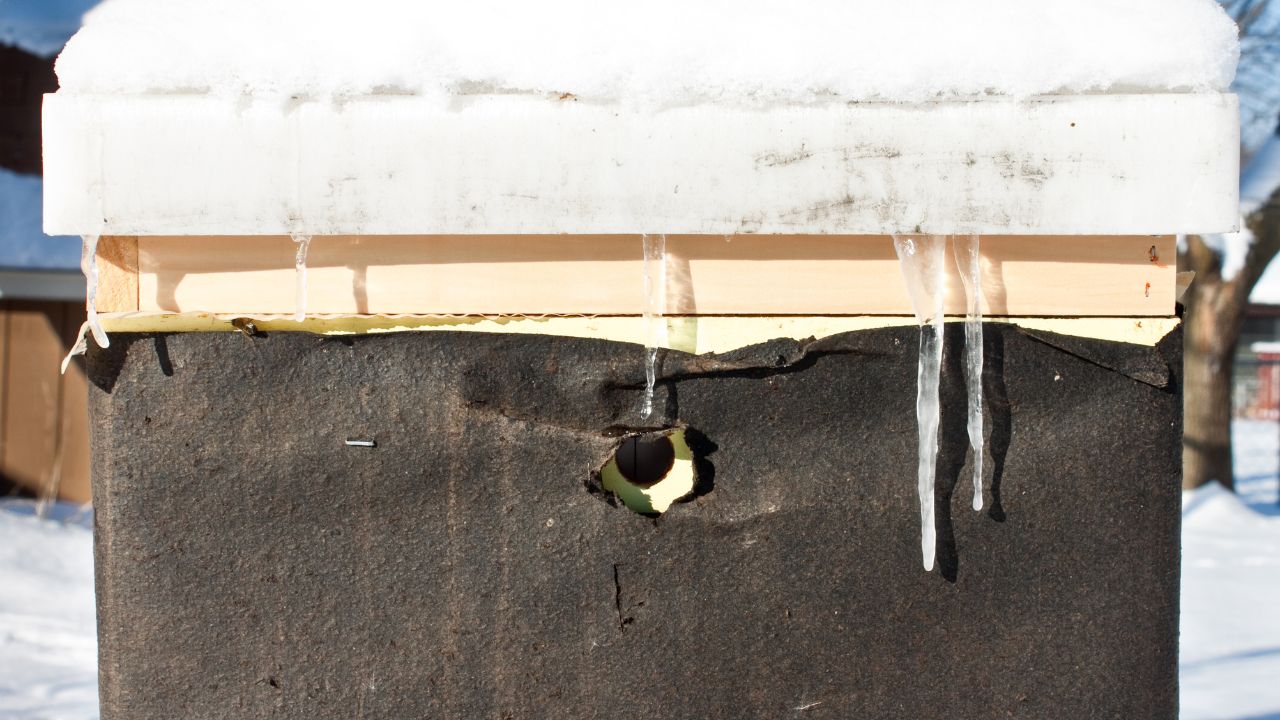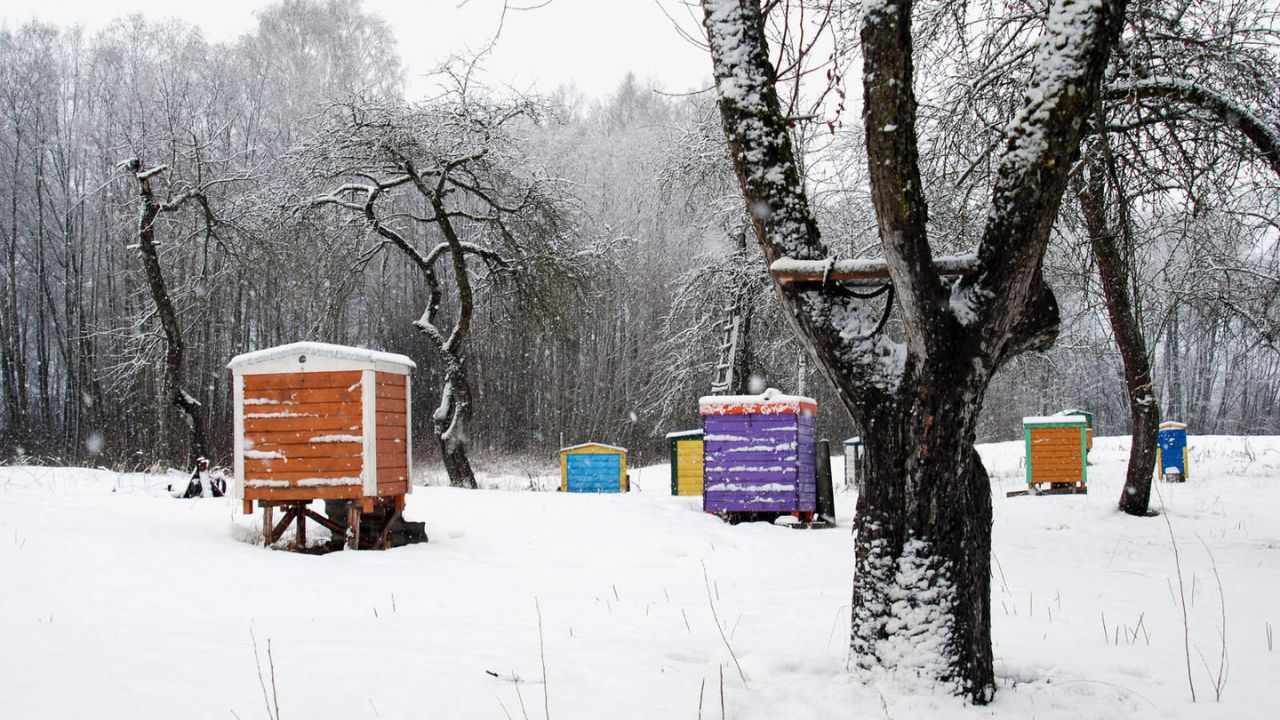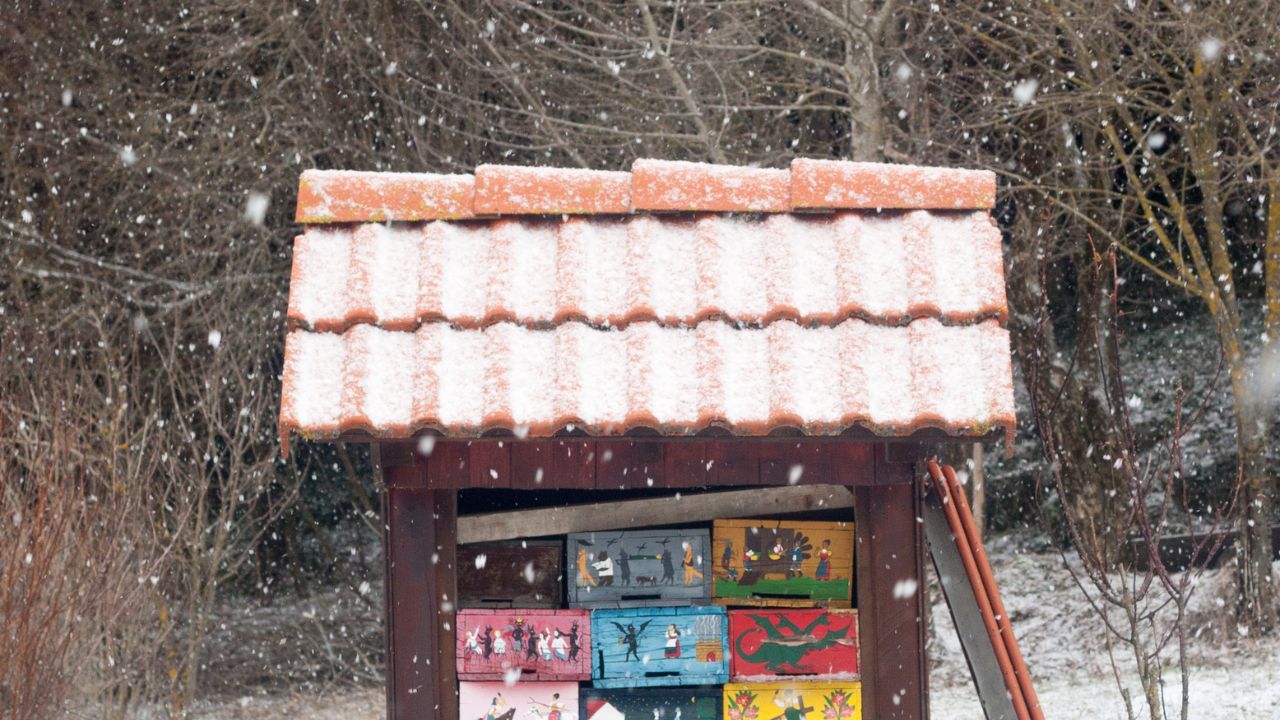Move the Apiaries to a Warmer Spot

One of the easiest ways to help your bees keep the hive warm during winter weather is to move the hives to a warmer spot. Look for an area that has low foot traffic but plenty of sunlight on sunny days.
Secure the Hives Against High Winds

If you live in an area with frequent winter storms, secure your hives against strong winds. Use rope, straps, or bricks to tie or weigh down the hives so they won’t topple with gusts. It’s not likely your beehive will survive being knocked over in frigid weather, so make sure their home is secure.
Set Up a Wind Breaker

Setting up wind breakers — physical barriers that will keep your apiaries from facing the brunt of cold winds — offers your bees several benefits. For starters, they’re another way to protect your hives from strong gusts that may tip them over. And while the buffers won’t generate any warmth, they will help the hives retain heat by shielding the boxes from freezing air currents. When setting up a shield, it’s also a good idea to check over your hives for cracks and holes that may let in cold air and moisture. Seal these up to offer the hive the most protection.
Add Reducers and Remove Excluders

While on the subject of reducing the flow of cold air into the beehive, let’s discuss the hive entrance. During warmer months, you likely have a larger entrance so that many bees can freely enter and exit at the same time. In cold weather, you should add reducers to hive entrances. The bees won’t be leaving the hive as much, except for cleansing flights, so minimizing this opening will keep cold air (and pests like wasps and mice) out of the nest. At the same time, remember to remove excluders you may have within the beehive. If you leave these in place, the queen will not be able to move with her colony, which will result in her death and the death of the hive.
Ensure Good Ventilation

Drilling ventilation holes or propping up your hive cover by tilting it back or using shims will improve the air flow for your bees. This may seem counterintuitive considering the freezing temperatures, but it’s actually essential for maintaining the health of your colony. Honey bees will have little interest in leaving the hive during cold weather.
Wrap Your Beehive

There is some debate as to whether it’s a good idea to wrap your hive for the winter. Wrapping involves covering your hives with black roofing felt or another insulating material. On one hand, the extra insulation will help your bees stay warmer by trapping heated air and offering another layer of protection from icy drafts.
Reconfigure the Beehives

As the size of your colony is greatly reduced during the colder season, you should remove unused boxes from the hive. Doing so will keep your bees from wasting energy to keep unnecessary space heated.
Combining small or weak beehives

Small beehives may not be able to survive winter, even if they’re populated with healthy bees. This is because small colonies simply can’t generate the heat necessary to stay warm all through winter.
Supplement Food Stores

When your colony’s efforts throughout the year fall short and they don’t have enough food to feed on in the winter months, you need to provide emergency feeding to help them survive. In late fall, start with a sugar syrup.
When the colder weather moves in, switch to fondant, which you can buy or make yourself. You can also offer grease patties that have the extra benefit of controlling varroa mites. Also keep in mind that if you provide food for your colony because they didn’t have enough honey, you must continue to do so through early spring or until they’re able to leave the nest to find pollen and nectar.
Monitor, but Don’t Bother, the Hive

As tempting as it may be for beekeepers to constantly check in on their colony during winter, it’s best to mostly leave them alone. Remember that every time you open the beehive to look in, you’re exposing your honeybees to chilly temperatures and diminishing their hard work of keeping the hive toasty.
Becky is a wildlife enthusiast and pet and livestock care expert with a diploma in canine nutrition. With over a decade of experience in animal welfare, Becky lends her expertise to Simple Family Preparedness through insightful info about pets, livestock, bee keeping, and the practicalities of homesteading.

